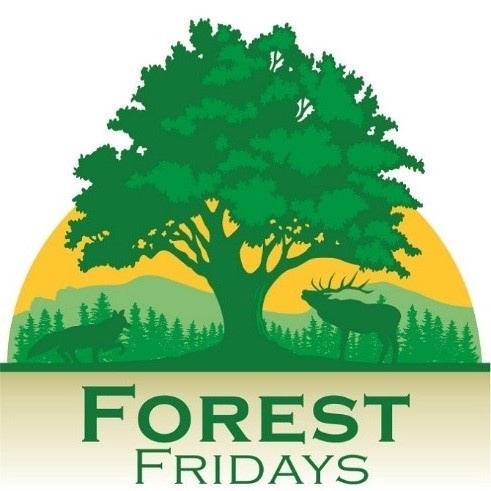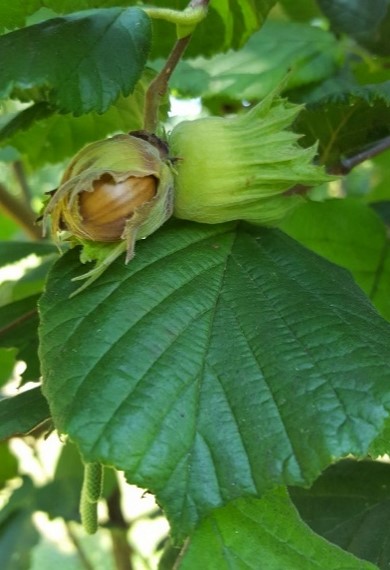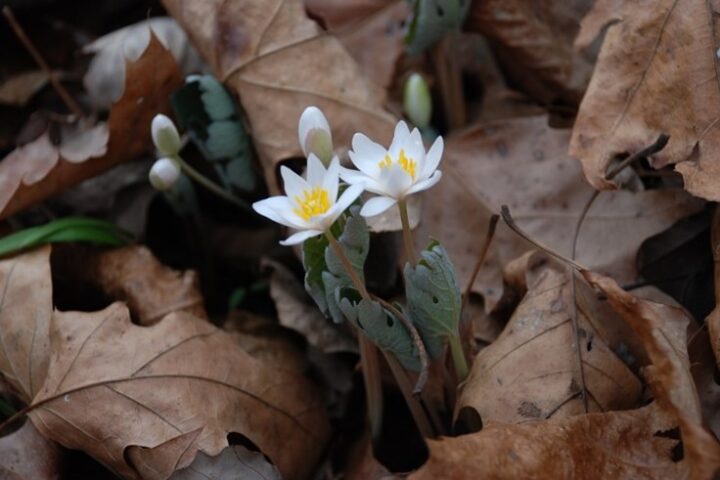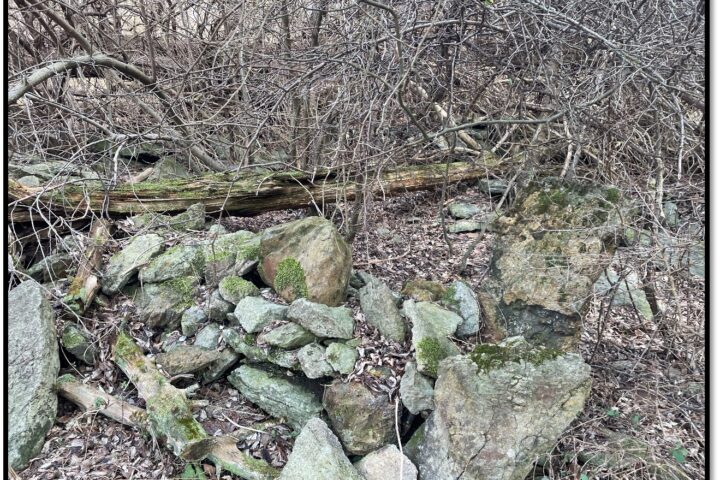
by Robbie Coville
Whenever people can manage trees and forests in mutually beneficial ways, there are opportunities for ‘productive conservation’. That’s a sweet spot where environmental conservation goals are advanced hand-in-hand with economic goals. In Pennsylvania, one way we apply this concept is with multifunctional riparian forest buffers, expanding demand for this water quality conservation practice by including economically and culturally-appealing plants. Of all the plants found in multifunctional buffers, windbreaks, and other agroforestry practices, there is growing interest in hazels (also known as filberts or cobnuts, all referring to the same Corylus genus of plants).

Hybrid hazelnut shells and kernels (photo from the Arbor Day Foundation).
You might know of hazels in two different forms: nuts with distinct flavor in food and drinks, and shrubs native to eastern woodlands. Those tend to be two different species of hazels, as European hazels (Corylus avellana) are commonly eaten, and American hazels (Corylus americana) are tough trees with smaller nuts and a range spanning eastern and central USA. You may also find native beaked hazel (Corylus cornuta) in Pennsylvania, though it is less common. Now is a good time to harvest sticky husk clusters full of hazelnuts, if you can get them before the squirrels! Hazels are harvested late August to September, ready when the nut can move within its husk.
Most of the world’s culinary hazelnuts are from European hazel, with about 75% of commercial production in Turkey and almost all domestic production in Oregon, for now.1 The European hazel is not very cold hardy, and it is not resilient to North America’s native Eastern Filbert Blight (EFB) fungal disease. While American hazels can tolerate EFB, European hazels tend to be mortally wounded by it.2

Hazel husk cluster on a European x American hybrid shrub at Coble’s Edible Nuts, Gettysburg (photo by author, August 2021).
Efforts are underway to hybridize American and European hazel, including the Upper Midwest Hazelnut Development Initiative and, closer to home, the Hybrid Hazelnut Consortium led by Rutgers University and Arbor Day Foundation. In the past few years, promising hybrids are starting to be grown throughout the Mid-Atlantic. You can find them in commercial orchards and as productive plants in diversified riparian buffers, windbreaks, hedgerows, forest gardens, and other agroforestry land uses. Nuts and branches are harvested for foods and crafts3, and historically hazels provided staple foods and materials.4 Hazels offer many of the “F’s of forests”5: food, fiber, fuel, fodder, “farmaceuticals”, and fun!
In an upcoming part 2, look for differences between hybrid and native hazels, how they are used in different agroforestry practices, and different threads to follow if you want to learn more.

Farmer Harrison Rhodes of Rising Locust Farm, Manheim, with a fruitful hybrid hazel in a windbreak (photo by author, August 2021).
References:
1 https://www.agmrc.org/commodities-products/nuts/hazelnuts
2 https://hort.extension.wisc.edu/articles/eastern-filbert-blight/
3 https://www.ninehazelsfarm.com/coppice-craft
4 https://daily.jstor.org/everything-you-wanted-to-know-about-hazelnuts-but-were-afraid-to-ask/
5 Jacke, D. & Toensmeier, E. (2005). Edible Forest Gardens – Volume 2: Ecological Design and Practice for Temperate Climate Permaculture. Chelsea Green Publishing.
Forest Fridays are published weekly by the Pennsylvania Department of Conservation and Natural Resources’ Bureau of Forestry.




